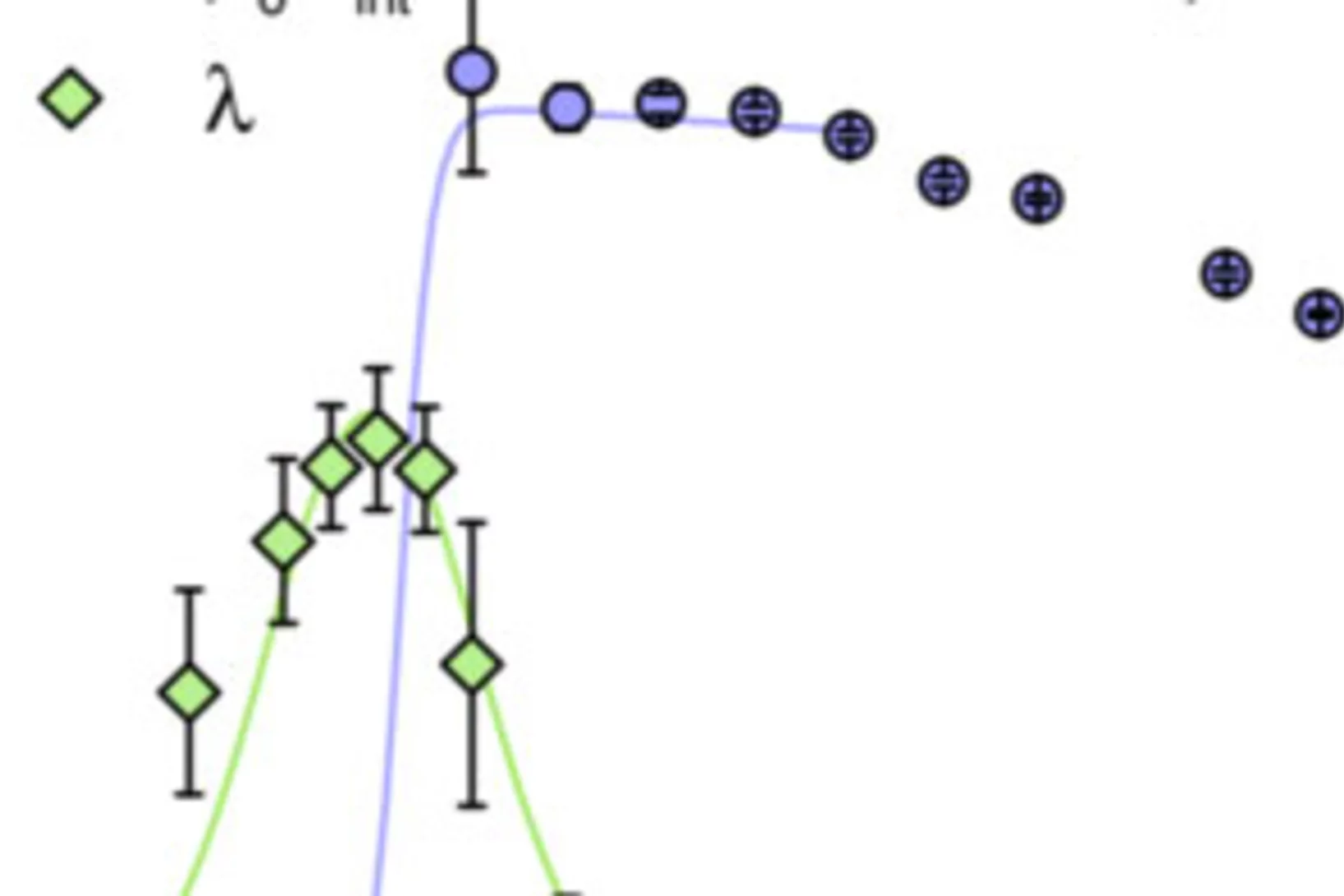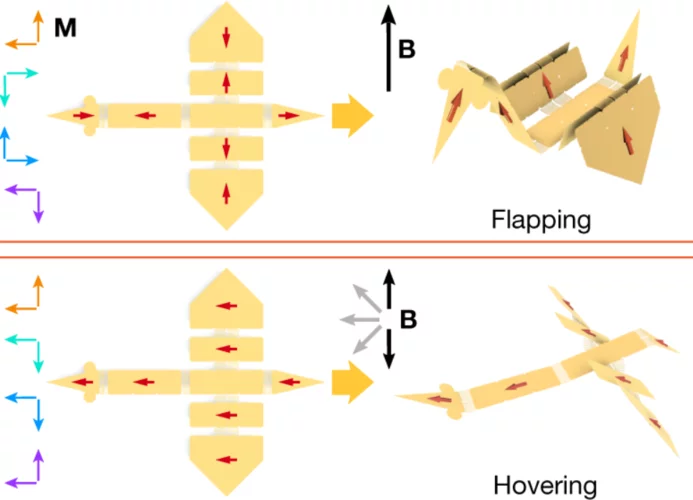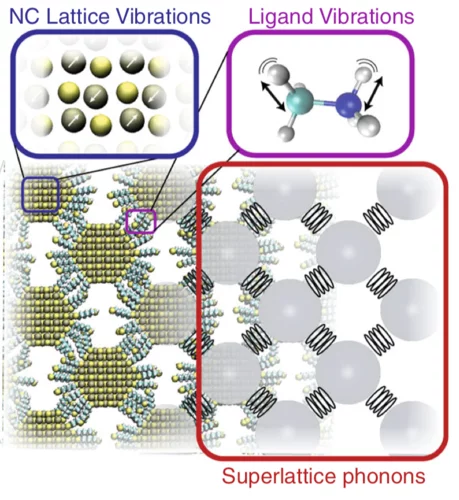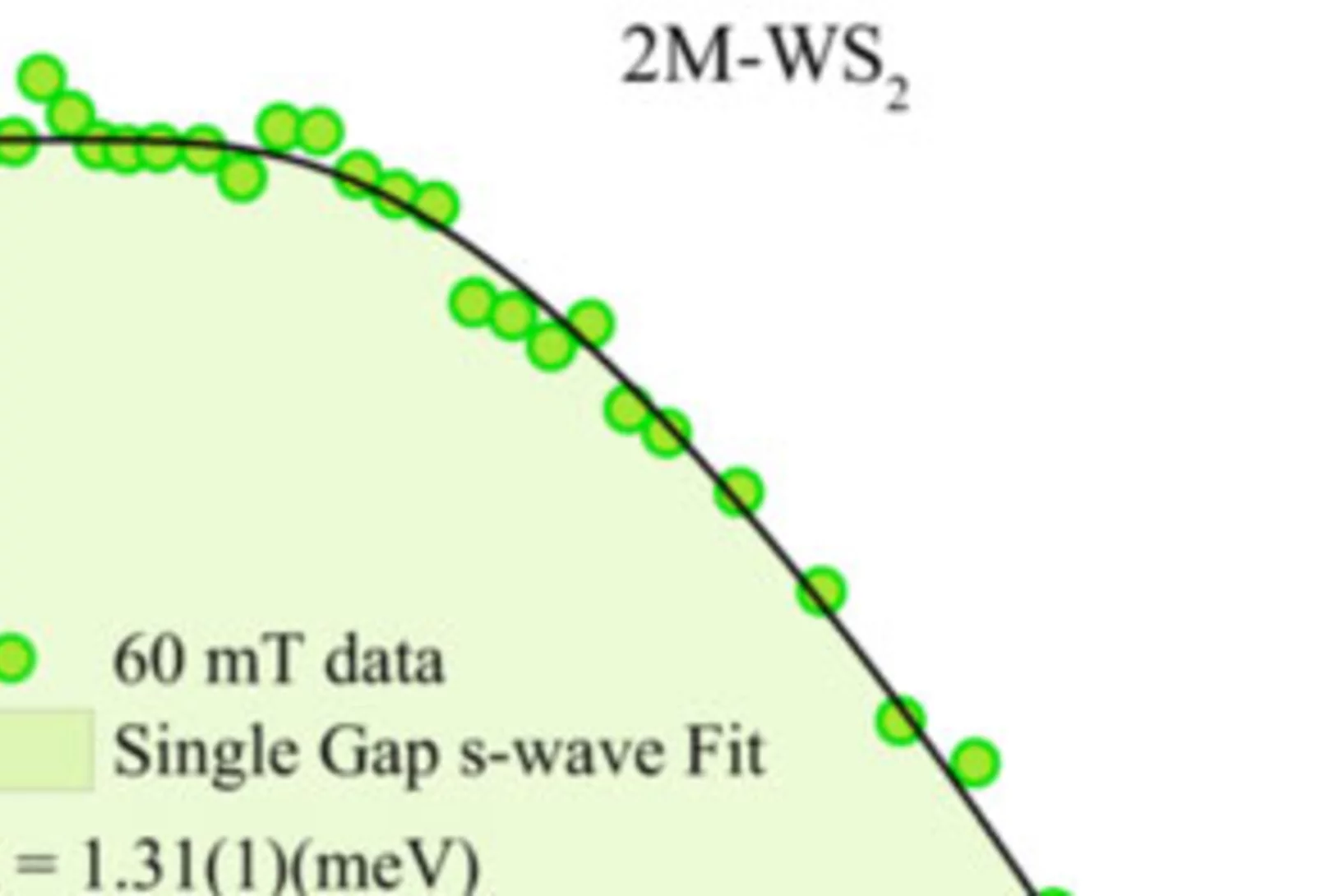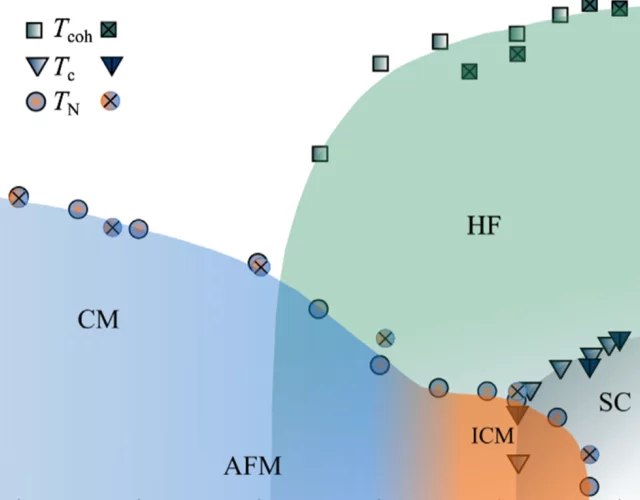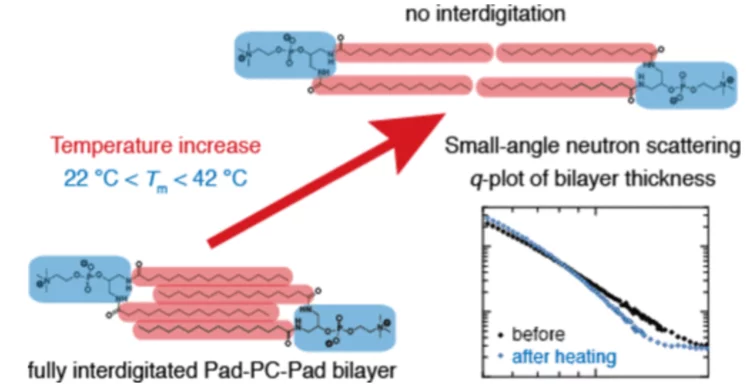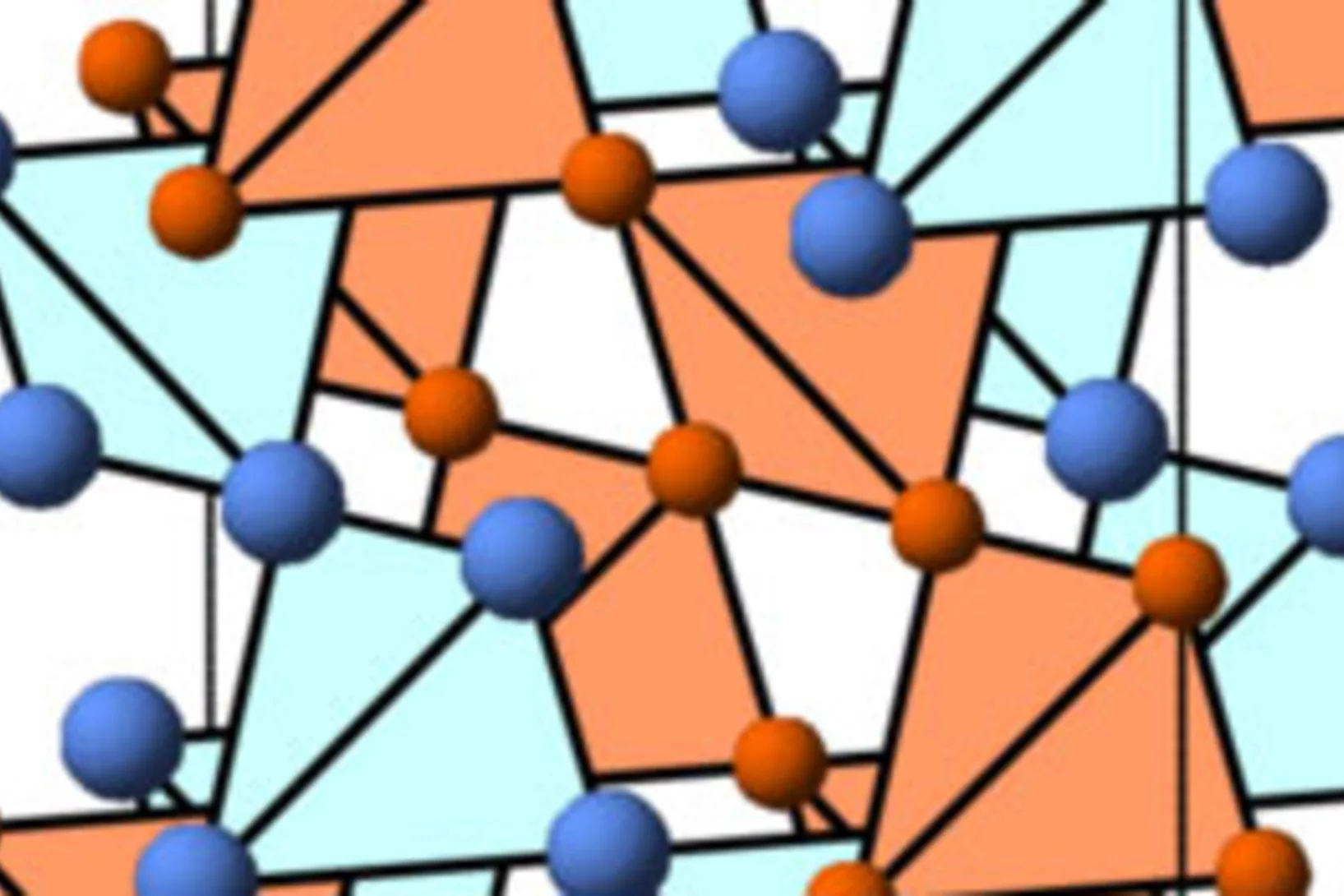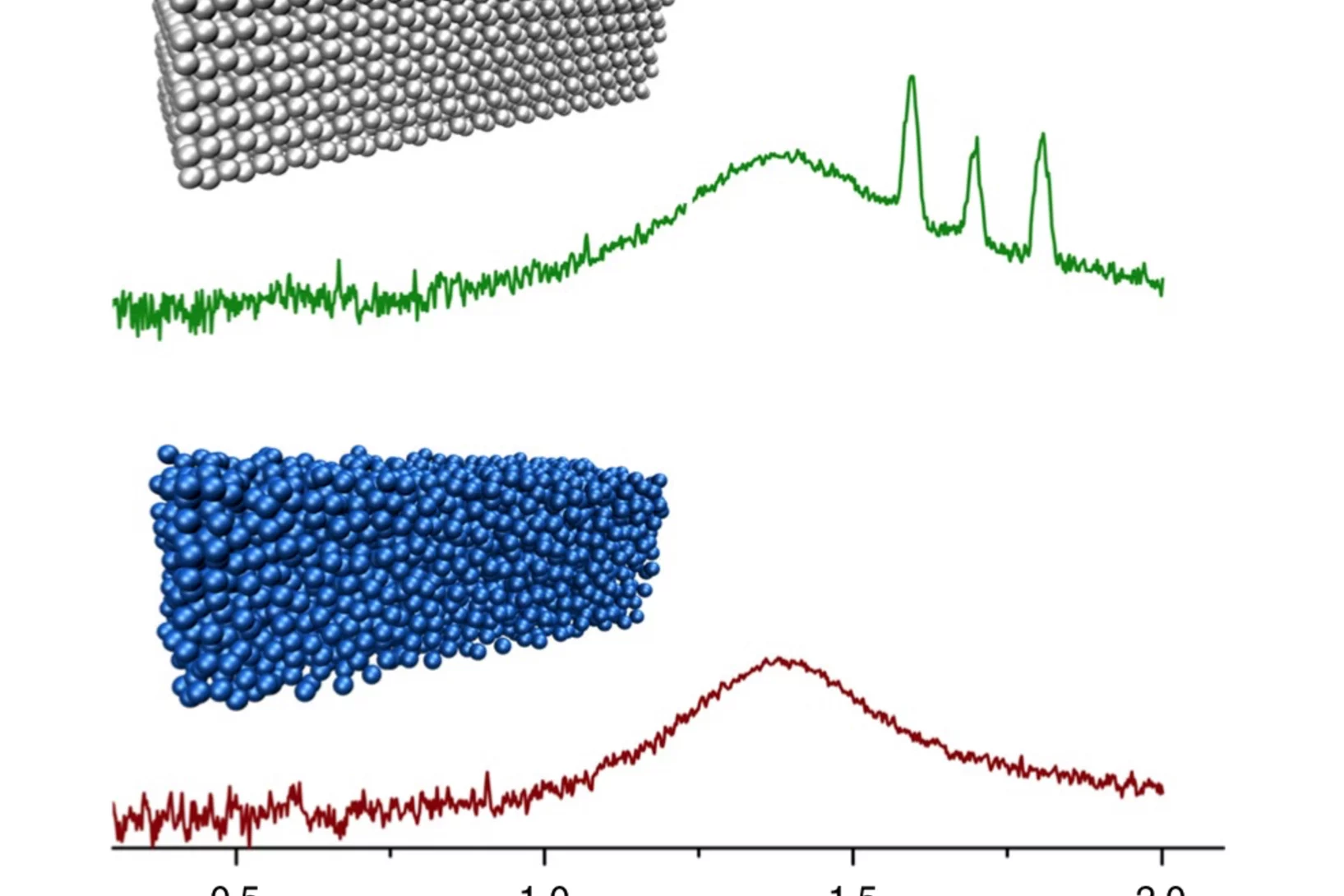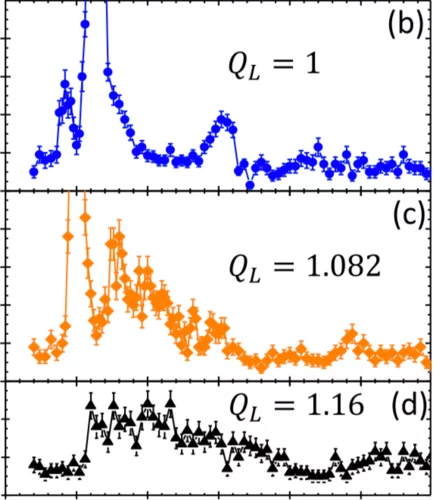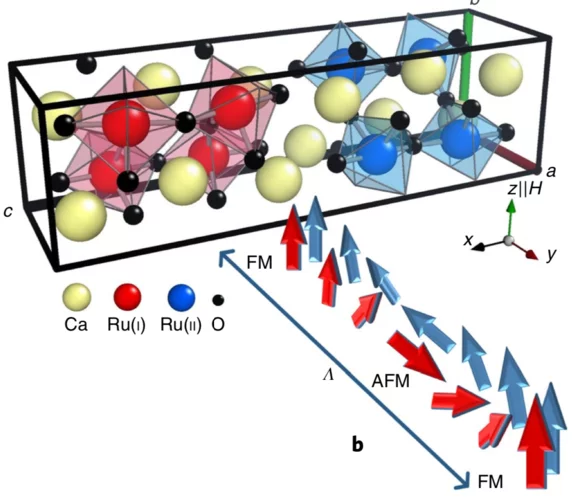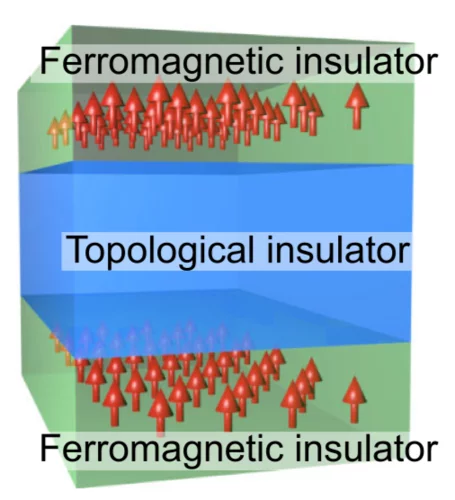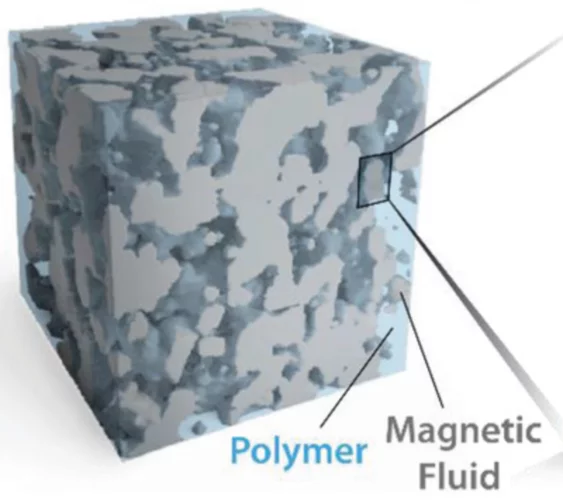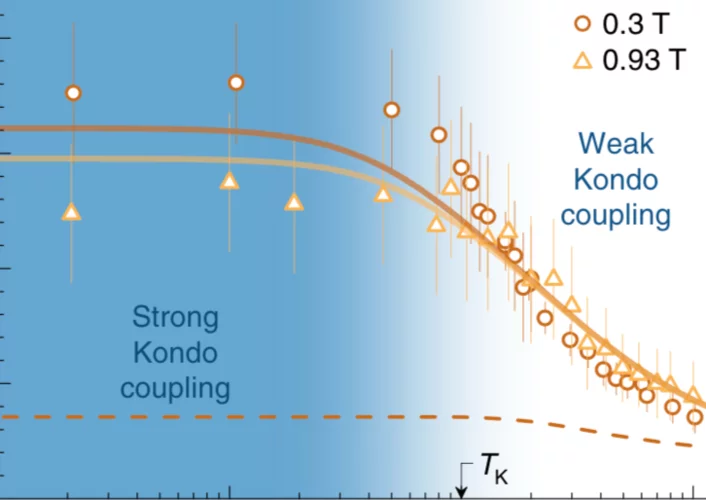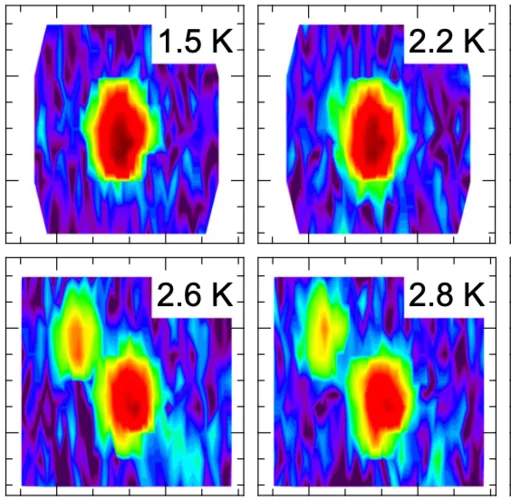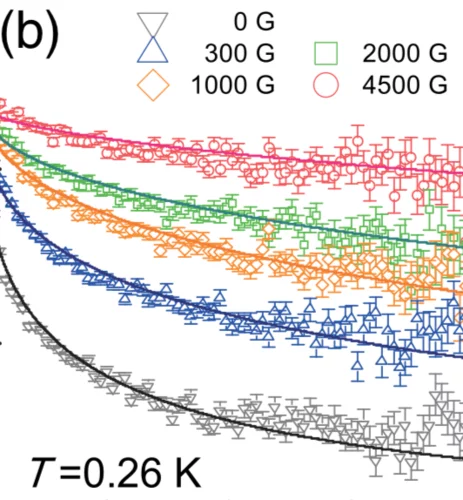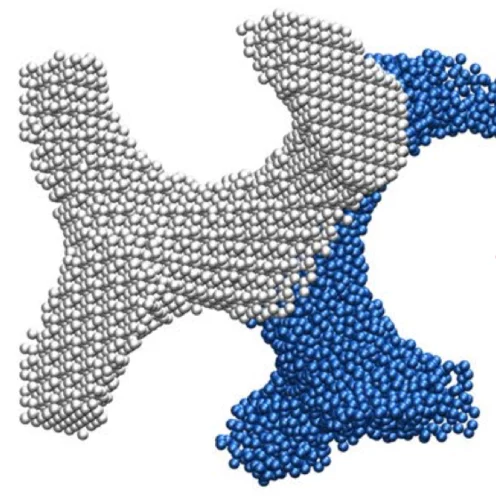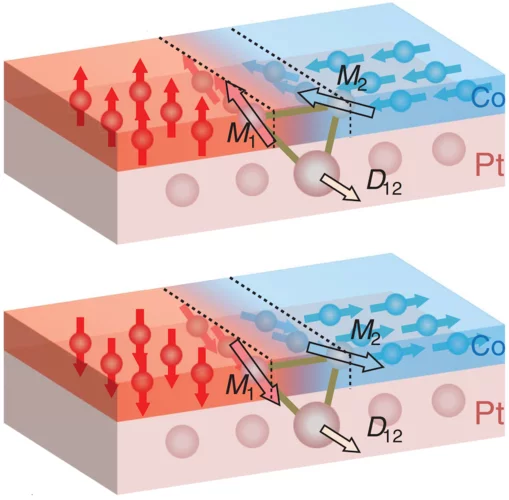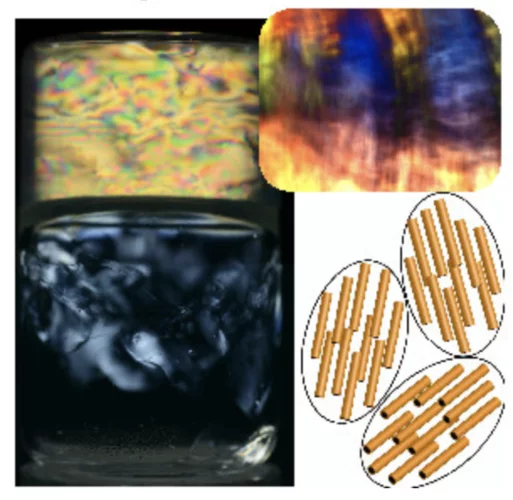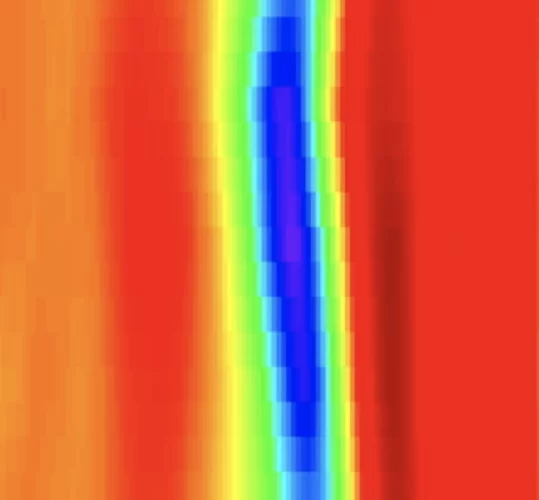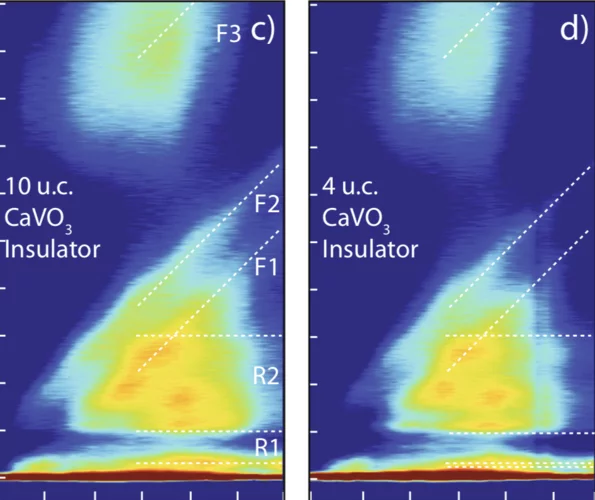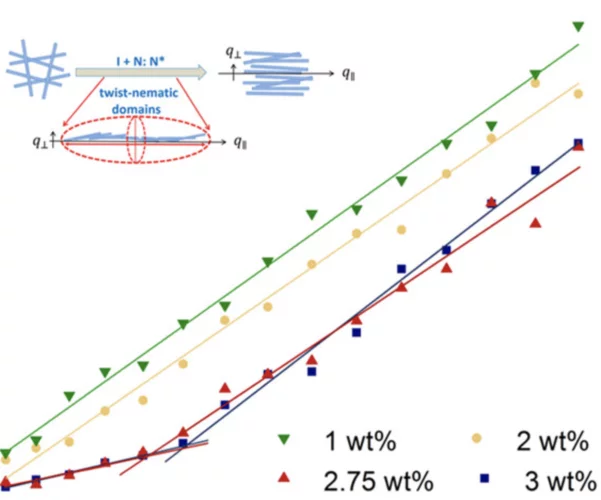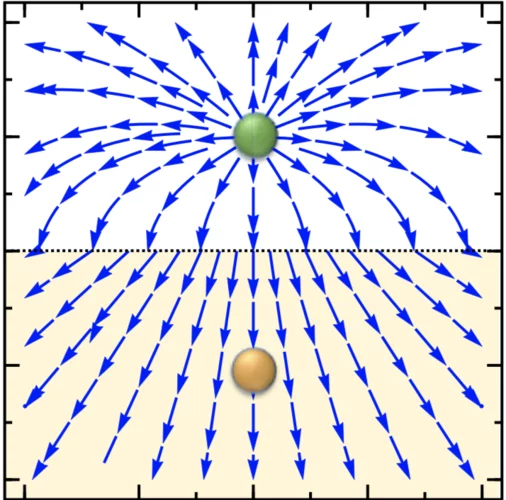Advances in artificial spin ice
Artificial spin ices consist of nanomagnets arranged on the sites of various periodic and aperiodic lattices. They have enabled the experimental investigation of a variety of fascinating phenomena such as frustration, emergent magnetic monopoles and phase transitions that have previously been the domain of bulk spin crystals and theory, as we discuss in this Review.
Magnetic-Field Control of Topological Electronic Response near Room Temperature in Correlated Kagome Magnets
Strongly correlated kagome magnets are promising candidates for achieving controllable topological devices owing to the rich interplay between inherent Dirac fermions and correlation-driven magnetism. Here we report tunable local magnetism and its intriguing control of topological electronic response near room temperature in the kagome magnet Fe3Sn2 using small angle neutron scattering, muon spin rotation, and magnetoresistivity measurement techniques.
Nanomagnetic encoding of shape-morphing micromachines
Shape-morphing systems, which can perform complex tasks through morphological transformations, are of great interest for future applications in minimally invasive medicine, soft robotics, active metamaterials and smart surfaces. With current fabrication methods, shape-morphing configurations have been embedded into structural design by, for example, spatial distribution of heterogeneous materials, which cannot be altered once fabricated.
One Proximate Kitaev Spin Liquid in the K-J-Γ Model on the Honeycomb Lattice
In addition to the Kitaev (K) interaction, candidate Kitaev materials also possess Heisenberg (J) and off- diagonal symmetric (Γ) couplings. We investigate the quantum (S=1/2) K-J-Γ model on the honeycomb lattice by a variational Monte Carlo method. In addition to the “generic” Kitaev spin liquid (KSL), we find that there is just one proximate KSL (PKSL) phase, while the rest of the phase diagram contains different magnetically ordered states.
Extended Magnetic Dome Induced by Low Pressures in Superconducting FeSe(1 − x)Sx
We report muon spin rotation and magnetization measurements under pressure on Fe1+δSe1−xSx with x ≈ 0.11. Above p ≈ 0.6 GPa we find a microscopic coexistence of superconductivity with an extended dome of long range magnetic order that spans a pressure range between previously reported separated magnetic phases.
Nanocrystal superlattices as phonon-engineered solids and acoustic metamaterials
Phonon engineering of solids enables the creation of materials with tailored heat-transfer properties, controlled elastic and acoustic vibration propagation, and custom phonon-electron and phonon-photon interactions. These can be leveraged for energy transport, harvesting, or isolation applications and in the creation of novel phonon-based devices, including photoacoustic systems and phonon-communication networks.
Nodeless superconductivity and its evolution with pressure in the layered dirac semimetal 2M-WS2
Recently, the transition metal dichalcogenide (TMD) system 2M-WS2 has been identified as a Dirac semimetal exhibiting both superconductivity with the highest Tc ~ 8.5 K among all the TMD materials and topological surface states. Here we report on muon spin rotation (μSR) and density functional theory studies of microscopic SC properties and the electronic structure in 2M-WS2 at ambient and under hydrostatic pressures (pmax = 1.9 GPa).
Evolution of Magnetic Order from the Localized to the Itinerant Limit
Quantum materials that feature magnetic long-range order often reveal complex phase diagrams when localized electrons become mobile. In many materials magnetism is rapidly suppressed as electronic charges dissolve into the conduction band. In materials where magnetism persists, it is unclear how the magnetic properties are affected.
Visualization and quantification of inhomogeneous and anisotropic magnetic fields by polarized neutron grating interferometry
The intrinsic magnetic moment of a neutron, combined with its charge neutrality, is a unique property which allows the investigation of magnetic phenomena in matter. Here we present how the utilization of a cold polarized neutron beam in neutron grating interferometry enables the visualization and characterization of magnetic properties on a microscopic scale in macroscopic samples.
Small-Angle Neutron Scattering Study of Temperature-Induced Structural Changes in Liposomes
Liposomes of specific artificial phospholipids, such as Pad-PC-Pad and Rad-PC-Rad, are mechanically responsive. They can release encapsulated therapeutics via physical stimuli, as naturally present in blood flow of constricted vessel segments. The question is how these synthetic liposomes change their structure in the medically relevant temperature range from 22 to 42 °C.
Experimental signatures of a three-dimensional quantum spin liquid in effective spin-1/2 Ce2Zr2O7 pyrochlore
A quantum spin liquid is a state of matter where unpaired electrons’ spins, although entangled, do not show magnetic order even at the zero temperature. The realization of a quantum spin liquid is a long-sought goal in condensed-matter physics.
Spin fluctuation induced Weyl semimetal state in the paramagnetic phase of EuCd2As2
Weyl fermions as emergent quasiparticles can arise in Weyl semimetals (WSMs) in which the energy bands are nondegenerate, resulting from inversion or time-reversal symmetry breaking. Nevertheless, experimental evidence for magnetically induced WSMs is scarce. Here, using photoemission spectroscopy, we observe that the degeneracy of Bloch bands is already lifted in the paramagnetic phase of EuCd2As2. We attribute this effect to the itinerant electrons experiencing quasi-static and quasi–long-range ferromagnetic fluctuations.
Soft biomimetic nanoconfinement promotes amorphous water over ice
Water is a ubiquitous liquid with unique physicochemical properties, whose nature has shaped our planet and life as we know it. Water in restricted geometries has different properties than in bulk. Confinement can prevent low-temperature crystalliza- tion of the molecules into a hexagonal structure and thus create a state of amorphous water. To understand the survival of life at subzero temperatures, it is essential to elucidate this behaviour in the presence of nanoconfining lipidic membranes.
Tomonaga-Luttinger Liquid Spin Dynamics in the Quasi-One-Dimensional Ising-Like Antiferromagnet BaCo2V2O8
Combining inelastic neutron scattering and numerical simulations, we study the quasi-one-dimensional Ising anisotropic quantum antiferromagnet BaCo2V2O8 in a longitudinal magnetic field. This material shows a quantum phase transition from a Néel ordered phase at zero field to a longitudinal incommensurate spin density wave at a critical magnetic field of 3.8 T.
Metamagnetic texture in a polar antiferromagnet
The notion of a simple ordered state implies homogeneity. If the order is established by a broken symmetry, the elementary Landau theory of phase transitions shows that only one symmetry mode describes this state. At the exact points of phase coexistence, domain states composed of large regions of different phases can be stabilized by long-range interactions.
Large Anomalous Hall Effect in Topological Insulators with Proximitized Ferromagnetic Insulators
We report a proximity-driven large anomalous Hall effect in all-telluride heterostructures consisting of the ferromagnetic insulator Cr2Ge2Te6 and topological insulator (Bi,Sb)2Te3. Despite small magnetization in the (Bi,Sb)2Te3 layer, the anomalous Hall conductivity reaches a large value of 0.2e2/h in accord with a ferromagnetic response of the Cr2Ge2Te6.
Critical fields of Nb3Sn prepared for superconducting cavities
Nb3Sn is currently the most promising material other than niobium for future superconducting radiofrequency cavities. Critical fields above 120 mT in pulsed operation and about 80 mT in CW have been achieved in cavity tests. This is large compared to the lower critical field as derived from the London penetration depth, extracted from low field surface impedance measurements.
Phase transition in the cuprates from a magnetic-field-free stiffness meter viewpoint
A method to measure the superconducting (SC) stiffness tensor ρs, without subjecting the sample to external magnetic field, is applied to La1.875Sr0.125CuO4. The method is based on the London equation J=-ρsA, where J is the current density and A is the vector potential which is applied in the SC state.
Magnetically Addressable Shape-Memory and Stiffening in a Composite Elastomer
With a specific stimulus, shape‐memory materials can assume a temporary shape and subsequently recover their original shape, a functionality that renders them relevant for applications in fields such as biomedicine, aerospace, and wearable electronics. Shape‐memory in polymers and composites is usually achieved by exploiting a thermal transition to program a temporary shape and subsequently recover the original shape.
Multidimensional Characterization of Mixed Ligand Nanoparticles Using Small Angle Neutron Scattering
The properties of ligand protected gold nanoparticles are determined by the synergistic interplay of their structural components, including the metal core, the ligand shell, and the solvation layer. However, the simultaneous characterization of all these components remains a major challenge given their disparate chemical nature.
Kondo screening in a charge-insulating spinon metal
The Kondo effect, an eminent manifestation of many-body physics in condensed matter, is traditionally explained as exchange scattering of conduction electrons on a spinful impurity in a metal. The resulting screening of the impurity's local moment by the electron Fermi sea is characterized by a Kondo temperature TK, below which the system enters a strongly coupled regime.
Elementary excitation in the spin-stripe phase in quantum chains
Elementary excitations in condensed matter capture the complex many-body dynamics of interacting basic entities in a simple quasiparticle picture. In magnetic systems the most established quasiparticles are magnons, collective excitations that reside in ordered spin structures, and spinons, their fractional counterparts that emerge in disordered, yet correlated spin states.
Exotic Low-Energy Excitations Emergent in the Random Kitaev Magnet Cu2IrO3
We report on magnetization M(H), dc and ac magnetic susceptibility Χ(T), specific heat Cm(T) and muon spin relaxation (μSR) measurements of the Kitaev honeycomb iridate Cu2IrO3 with quenched disorder. In spite of the chemical disorders, we find no indication of spin glass down to 260 mK from the Cm(T) and μSR data.
Soft biomimetic nanoconfinement promotes amorphous water over ice
Water is a ubiquitous liquid with unique physicochemical properties, whose nature has shaped our planet and life as we know it. Water in restricted geometries has different properties than in bulk. Confinement can prevent low-temperature crystalliza- tion of the molecules into a hexagonal structure and thus create a state of amorphous water. To understand the survival of life at subzero temperatures, it is essential to elucidate this behaviour in the presence of nanoconfining lipidic membranes.
Chirally coupled nanomagnets
Magnetically coupled nanomagnets have multiple applications in nonvolatile memories, logic gates, and sensors. The most effective couplings have been found to occur between the magnetic layers in a vertical stack. We achieved strong coupling of laterally adjacent nanomagnets using the interfacial Dzyaloshinskii-Moriya interaction. This coupling is mediated by chiral domain walls between out-of-plane and in-plane magnetic regions and dominates the behavior of nanomagnets below a critical size.
Ion-Induced Formation of Nanocrystalline Cellulose Colloidal Glasses Containing Nematic Domains
Controlling the assembly of colloids in dispersion is a fundamental approach toward the production of functional materials. Nanocrystalline cellulose (NCC) is a charged nanoparticle whose colloidal interactions can be modulated from repulsive to attractive by increasing ionic strength.
Negative flat band magnetism in a spin–orbit-coupled correlated kagome magnet
Electronic systems with flat bands are predicted to be a fertile ground for hosting emergent phenomena including unconven- tional magnetism and superconductivity, but materials that manifest this feature are rare. Here, we use scanning tunnelling microscopy to elucidate the atomically resolved electronic states and their magnetic response in the kagome magnet Co3Sn2S2.
Electronic localization in CaVO3 films via bandwidth control
Understanding and controlling the electronic structure of thin layers of quantum materials is a crucial first step towards designing heterostructures where new phases and phenomena, including the metal-insulator transition (MIT), emerge. Here, we demonstrate control of the MIT via tuning electronic bandwidth and local site environment through selection of the number of atomic layers deposited.
Anisotropic Diffusion and Phase Behavior of Cellulose Nanocrystal Suspensions
In this paper, we use dynamic light scattering in polarized and depolarized modes to determine the translational and rotational diffusion coefficients of concentrated rodlike cellulose nanocrystals in aqueous suspension. Within the range of studied concentrations (1–5 wt %), the suspension starts a phase transition from an isotropic to an anisotropic state as shown by polarized light microscopy and viscosity measurements.
Search for the Magnetic Monopole at a Magnetoelectric Surface
We show, by solving Maxwell’s equations, that an electric charge on the surface of a slab of a linear magnetoelectric material generates an image magnetic monopole below the surface provided that the magnetoelectric has a diagonal component in its magnetoelectric response. The image monopole, in turn, generates an ideal monopolar magnetic field outside of the slab.



